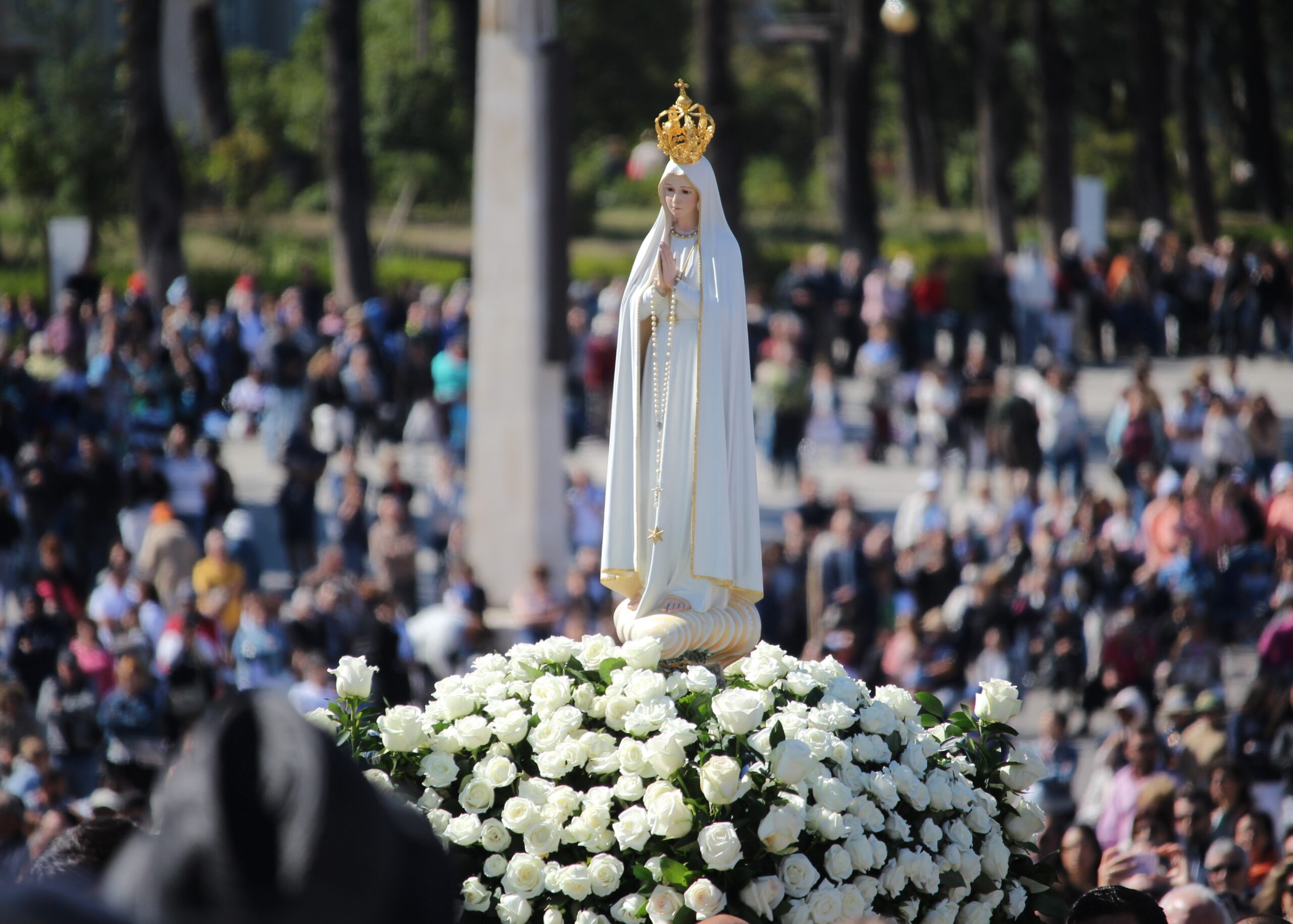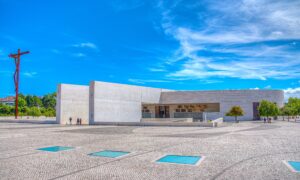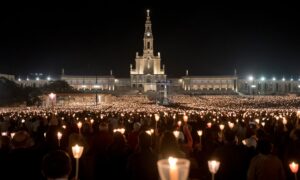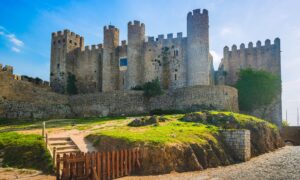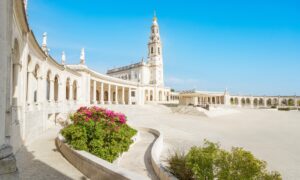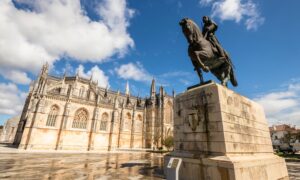The small town of Fátima in central Portugal is known across the globe for its profound religious significance, rooted in the apparitions of the Virgin Mary to three young shepherd children in 1917. At the heart of these mystical events are the Three Secrets of Fátima, which continue to capture the imagination of believers and scholars alike. These secrets, revealed during the Marian apparitions, carry messages of warning, hope, and divine prophecy.
Let’s delve into the history, content, and significance of these three secrets and their impact on the Catholic faith.
The Context: The Marian Apparitions of 1917
In 1917, the Virgin Mary, referred to as Our Lady of Fátima, is believed to have appeared to three shepherd children—Lucia dos Santos and her cousins, Francisco and Jacinta Marto—near the village of Fátima. Over six apparitions between May and October of that year, the Virgin entrusted the children with three powerful messages, later known as the Three Secrets of Fátima.
The children were sworn to secrecy regarding these revelations, and the full contents of the secrets were not revealed to the world until decades later, with each secret unveiled at different times. These messages from the Virgin Mary had a significant impact on the Catholic Church and continue to resonate with people of faith.
The First Secret: A Vision of Hell
The first secret, revealed to the children during the July 13 apparition, is a frightening and vivid vision of Hell. The Virgin Mary showed the children a terrifying glimpse of souls suffering in the fires of eternal damnation. According to Sister Lucia, who later became a Carmelite nun, this vision was accompanied by a message from the Virgin that underscored the importance of prayer and penance to save souls from this fate.
The Virgin Mary also encouraged the recitation of the Rosary as a powerful tool for interceding on behalf of sinners. The vision of Hell served as a stark warning about the consequences of straying from the path of righteousness and ignoring the need for spiritual renewal.
The Second Secret: The Consecration of Russia and the Threat of War
The second secret is both a prophecy and a call for action. In this message, the Virgin warned that World War I would soon come to an end, but if humanity did not turn away from sin and seek reconciliation with God, an even greater war would follow. This, of course, was a prophecy of World War II, which would break out just two decades later.
The Virgin also called for the consecration of Russia to her Immaculate Heart. If this consecration did not take place, she warned, Russia would “spread her errors” throughout the world, leading to war, destruction, and the persecution of the Church. The “errors” referred to the rise of communism, which did indeed spread across much of Europe and Asia after the Russian Revolution of 1917. The Virgin’s message was a clear plea for the conversion of Russia and the promotion of peace.
In 1942, Pope Pius XII consecrated the world to the Immaculate Heart of Mary, but it wasn’t until 1984 that Pope John Paul II formally consecrated Russia during a solemn ceremony in Rome, which many believe fulfilled the Virgin’s request.
The Third Secret: A Vision of Persecution and the Pope
The most mysterious and controversial of the Three Secrets is the third, which was not revealed to the world until 2000. For many years, the contents of this secret were the subject of intense speculation, with some believing it held apocalyptic predictions of global catastrophe or the end of the world.
The Third Secret was eventually made public by the Vatican in 2000, on the occasion of the beatification of Francisco and Jacinta Marto. This secret contained a symbolic vision seen by the children during the apparitions. In it, they described a “bishop dressed in white” who was shot and killed, along with many other clergy and laypeople, as they climbed a steep mountain under the watchful gaze of an angel holding a flaming sword.
The Vatican interpreted this vision as a prophecy of the persecution of the Church throughout the 20th century, particularly under totalitarian regimes like communism and fascism. It was also interpreted as a reference to the assassination attempt on Pope John Paul II in 1981. Strikingly, the assassination attempt took place on May 13, the anniversary of the first apparition in Fátima. The Pope himself credited Our Lady of Fátima with saving his life, believing her intervention deflected the bullet that could have been fatal.
Interpretation and Controversy
The Third Secret has been a source of much debate, particularly regarding its true meaning. Some skeptics believe the Vatican has withheld the full content of the secret or that its interpretation downplays its apocalyptic implications. However, the official stance of the Vatican is that the third secret was a vision meant to warn of the dangers facing the Church and humanity, emphasizing the power of prayer and repentance.
Sister Lucia, the last surviving visionary, confirmed that the Vatican’s interpretation aligned with what she had witnessed during the apparitions. Before her death in 2005, she lived a life of quiet contemplation, reaffirming her belief in the importance of the messages entrusted to her by the Virgin Mary.
The Enduring Legacy of the Three Secrets
The Three Secrets of Fátima remain a cornerstone of Catholic belief, particularly regarding the importance of prayer, penance, and devotion to the Virgin Mary. They have inspired countless individuals to seek spiritual renewal, and the town of Fátima has become a global symbol of hope and faith.
Pope John Paul II’s personal connection to Fátima further solidified its importance in the modern era. His devotion to Our Lady of Fátima—and his belief that she saved his life—reinforced the message of the apparitions, especially in a world still grappling with violence, conflict, and ideological divisions.
Conclusion
The Three Secrets of Fátima are far more than mysterious prophecies; they are profound spiritual messages that call for reflection, prayer, and a deeper connection to faith. As we look back on the 20th century and the events that have shaped our world, the messages of Fátima continue to offer a path toward hope, unity, and spiritual renewal.
Even today, Fátima draws millions of pilgrims each year, all seeking to experience the grace and serenity that the Virgin Mary promised. Whether one sees the secrets as divine prophecy or as powerful calls for moral and spiritual action, their impact on the world is undeniable, reminding us of the ongoing relevance of prayer, peace, and faith in the face of life’s greatest challenges.

